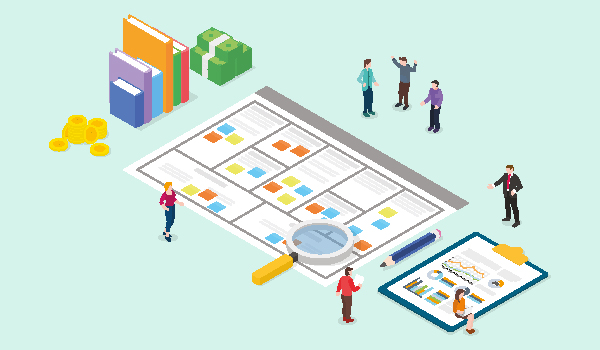It helps entrepreneurs and business managers to analyse, design, and document various aspects of their business in a structured and organised manner.
You can find out more about Stratergyser here, or download your Business Model Canvas here.
The Business Model Canvas consists of nine building blocks that cover the essential elements of a business –
Customer Segments: Identifies the specific groups of customers or market segments that the business aims to target. This block helps businesses understand customers’ needs, behaviours, and preferences.
Value Proposition: Describes the unique value the business offers its customers. It defines the products, services, or solutions that solve customer problems, fulfils their needs, or create value.
Channels: Outlines how the business communicates with and delivers value to its customers. It includes various distribution channels, marketing channels, and communication methods used to effectively reach and serve the target audience.
Customer Relationships: Defines the relationships the business establishes and maintains with its customers. It can range from personal assistance to self-service, automated support, or community-based interaction.
Revenue Streams: Identifies the sources of revenue for the business. It includes the pricing mechanisms, revenue models, and strategies employed to generate income, such as one-time sales, subscriptions, licensing, or advertising.
Key Activities: Encompasses the crucial tasks, operations, or activities required to deliver the value proposition effectively. It highlights the core competencies and capabilities necessary for the business’s success.
Key Resources: Represents the essential assets, resources, or inputs required to operate the business. This can include physical resources (e.g., manufacturing facilities, equipment), intellectual resources (e.g., patents, trademarks), human resources, or financial resources.
Key Partnerships: Describes the strategic alliances or partnerships that the business forms with other organisations to leverage their resources, expertise, or market reach. It helps businesses to optimise operations, reduce costs, mitigate risks, or access new markets.
Cost Structure: Encompasses all the costs and expenses associated with operating the business. It includes fixed costs (e.g., rent, salaries) and variable costs (e.g., production costs, marketing expenses). Analysing the cost structure helps businesses understand their cost drivers and optimise their operations for profitability.
The Business Model Canvas provides a holistic view of the business. It allows entrepreneurs and managers to assess the coherence and viability of their business model. It encourages strategic thinking, facilitates communication, and identifies areas for innovation and improvement. The canvas is a dynamic tool that can be adjusted and iterated upon as the business evolves and adapts to changing market conditions.
Over the next few months, I’ll share more Business Model Canvas-related content.

